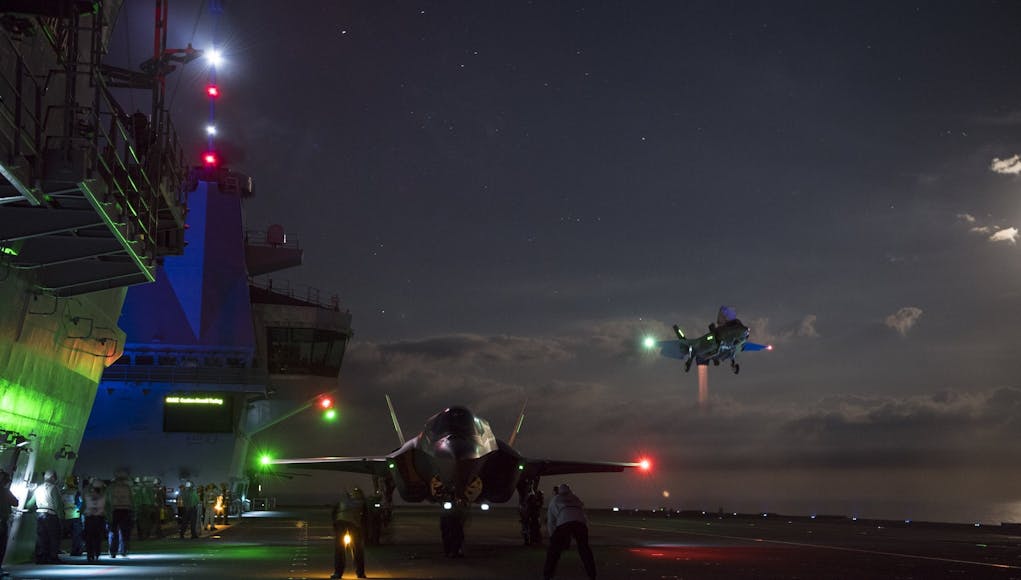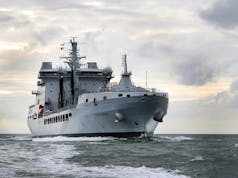HMS Queen Elizabeth and her first F-35B jets have completed opening phase of the First of Class Flight Trials.
The first of three such phases to be held on the ship, the developmental testing (DT-1) aimed to generate enough flight test data to certify the F-35B Lightning II as ready for future operational testing aboard the ship say Naval Air Systems Command.
The two F-35Bs involved were vertically landed aboard HMS Queen Elizabeth for the first time September the 25th, piloted by Royal Navy Commander Nathan Gray and Royal Air Force Squadron Leader Andy Edgell, both test pilots with the Pax River ITF.
By Oct. 8, the Integrated Test Force (ITF) had collected enough data to support operational test.
“It has been a superb effort by everyone across the ITF and HMS Queen Elizabeth so far in the UK’s F-35B sea trials,” said Royal Navy Capt. Jerry Kyd, the ship’s Commanding Officer.
“I could not be more pleased with the team spirit and dynamism from all that has delivered a volume of quality data which has put us well ahead of where we expected to be at this stage. I am very grateful to all the ITF folk who have been focused, professional and willing to go the extra mile—more to come!”
he test team—comprising nearly 175 ITF members aboard the ship—completed several needed parameters during DT-1, including day and night short-takeoffs and vertical landings with minimal deck motion, in varying wind conditions and with and without internal stores.
“I’m very proud of the test accomplishments by the combined team of the 1,500 personnel comprised of the ITF, the carrier strike group and the crew of HMS Queen Elizabeth with her embarked 820 and 845 squadrons,” said Andrew Maack, the F-35 Pax River ITF’s chief test engineer.
“It was impressive to see the excellent teamwork at all levels of the organizations.”
Beyond the completed DT-1 test requirements—which were performed within the same flight envelope as will be used in the first operational test phase—the ITF also conducted about half of the testing that falls under the DT-2 threshold, or the flight envelope needed to reach initial operational capability (maritime).
The ITF returns to the ship in late October for DT-2, which will concentrate on external stores testing, minimum performance short-takeoffs and SRVLs, and night operations.
A third developmental test for FOCFT(FW), followed by operational testing, is scheduled for 2019. Together, the tests will help the Ministry of Defence reach F-35B IOC(M) in 2020.














Fantastic work done by everyone involved.
They also managed to get in some landings by other US helicopters as well so things are going really well and this should bode well for integration into allied task forces.
I can see this ship becoming the flagship for many, many allied battle groups in the years to come and NATO once again being a true show of multi national force projection.
USMC’s Osprey too 🙂
Excellent news!
Well done that crew. It seems that HMS Queen Elizabeth and the F-35b are a good match. I am looking forward to a day of squadron trials.
This Is Excellent News and no reports of any Faults. Well done to All Involved.